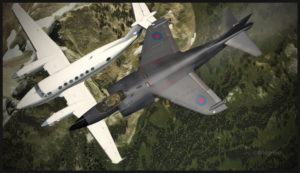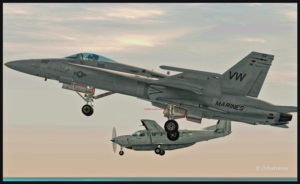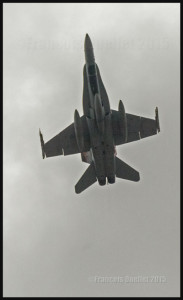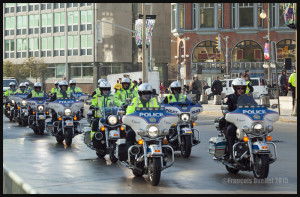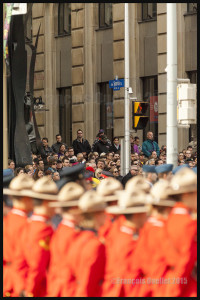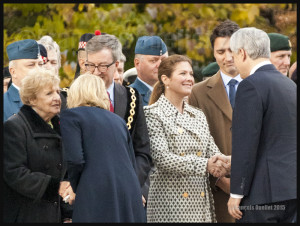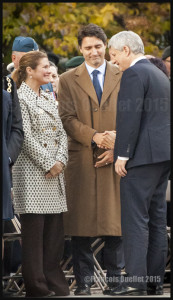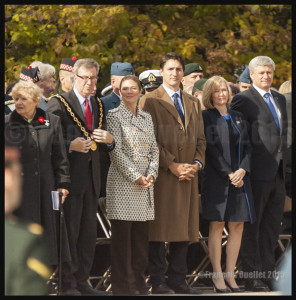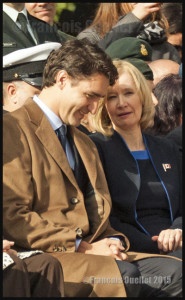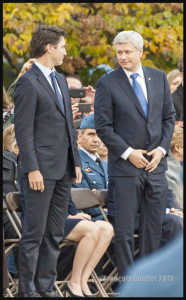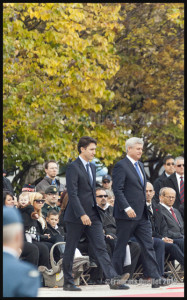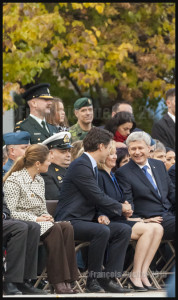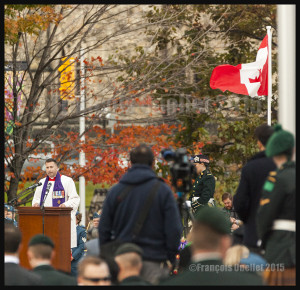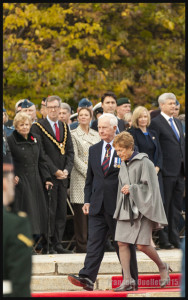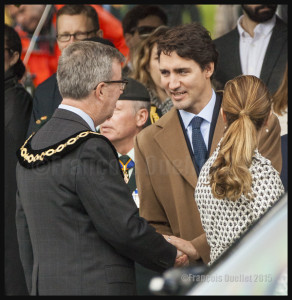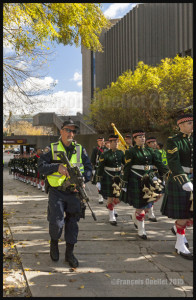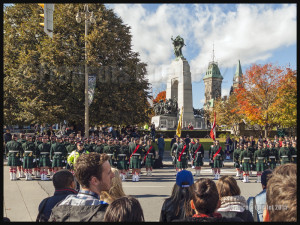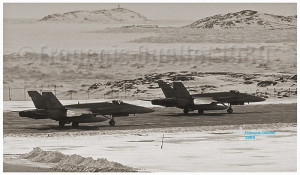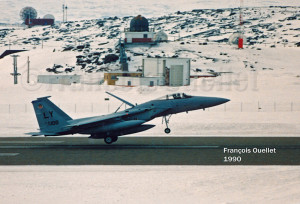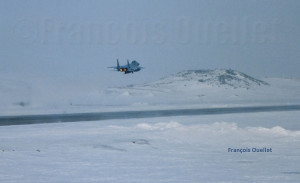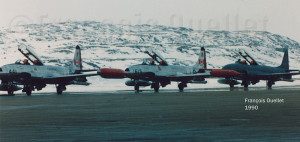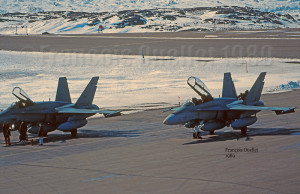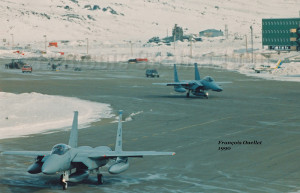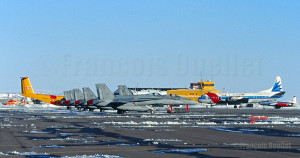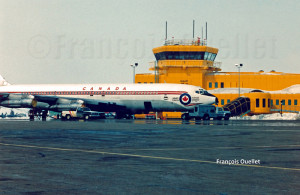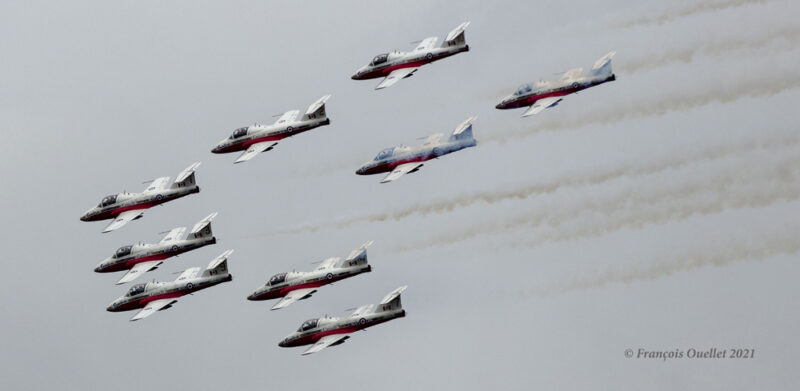
The Snowbirds flew over Quebec City in June 2021, followed by many other jets and canadian military transport planes and helicopters. Until the last minute, a layer of low clouds and occasional showers worried event organizers.
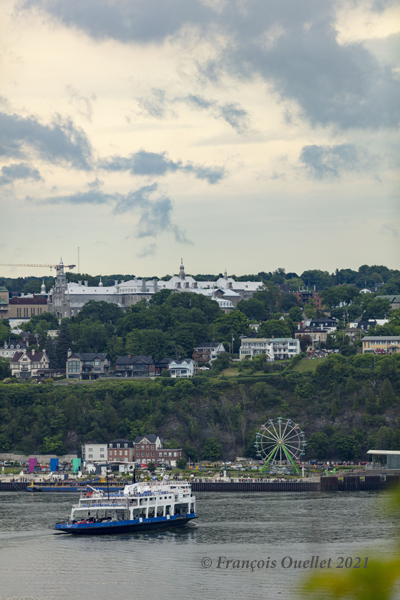
Low clouds are visible over Lévis in the picture above taken from the Dufferin terrace in Québec City. On the St. Lawrence Seaway, the ferry bound to Lévis is approaching its destination.

The CF-18s initially flew in a formation of three. For photography enthusiasts, the full frame camera used to capture those photos was a Canon 5DSr equipped with an EF 70-200mm f / 2.8L IS II USM telephoto lens. For the photo above, the shutter speed was set at 1/4000 and the focal length was 200mm. Given the CF-18’s fast fly-by, I opted for the AI Servo autofocus which quickly adapts to changes in the position of the objects to be photographed. Since the original image size was 50.6 megapixels, this allowed me to crop it in order to enlarge the military jets without losing quality.
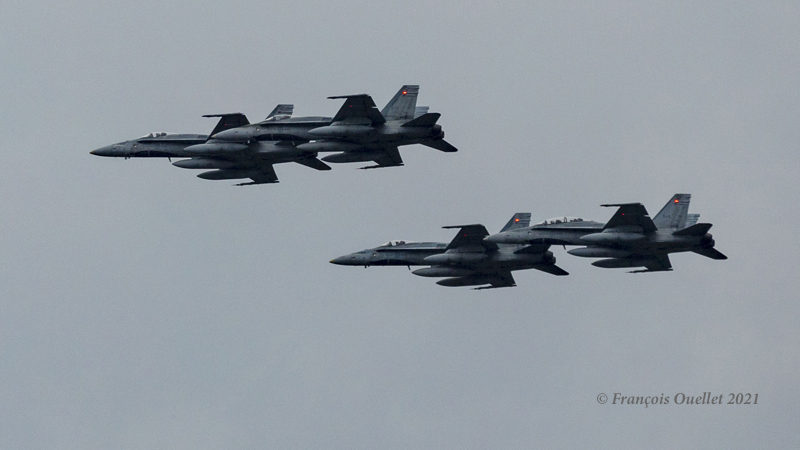
Above, four CF-18s were photographed with a shutter speed of 1/5000.
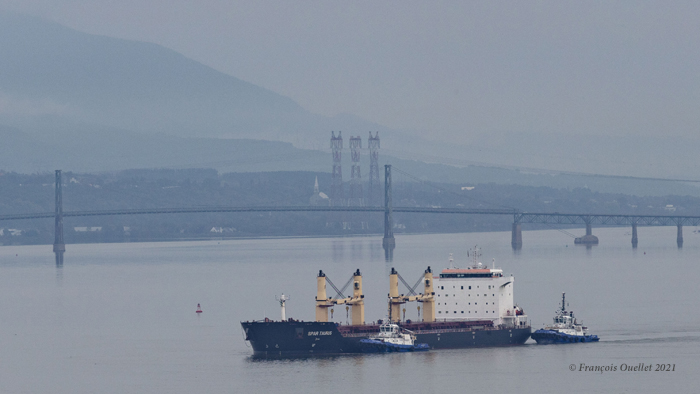
Between each fly-by of the various military jets, the maritime traffic continued as usual on the St. Lawrence River. Above, the Spar Taurus vessel , a bulk carrier built in 2005 and sailing under the flag of Norway, is heading towards the port of Quebec, accompanied by two Ocean company tugs. In the background, the Île d´Orléans bridge, which will be redone in a few years.
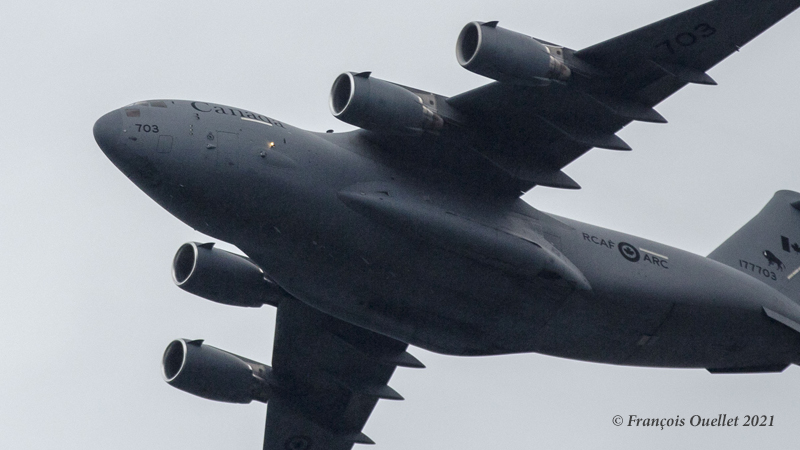
A C-17 Globemaster III, military transport aircraft built by McDonnell Douglas, flies over the Dufferin Terrace. Canada owns five of these aircrafts.

Above, a Canadian Bell CH-146 Griffon military helicopter , slowly flies near the Château Frontenac. A soldier seated behind takes a picture of the crowd gathered on the Dufferin Terrace. To photograph a helicopter, the shutter speed must be drastically reduced, so that the movement of the blades can be observed. For the photo above, I opted for 1/250, but I could have gone down to 1/125 without too much risk of the helicopter being out of focus.
There were other aircrafts that flew over the seaway, such as the CP-140 Aurora and the Lockheed C-130J Super Hercules, but the photos were not of sufficient quality to be published on the web.
Click on the link for other pictures of Québec City in Summer on my blog.
